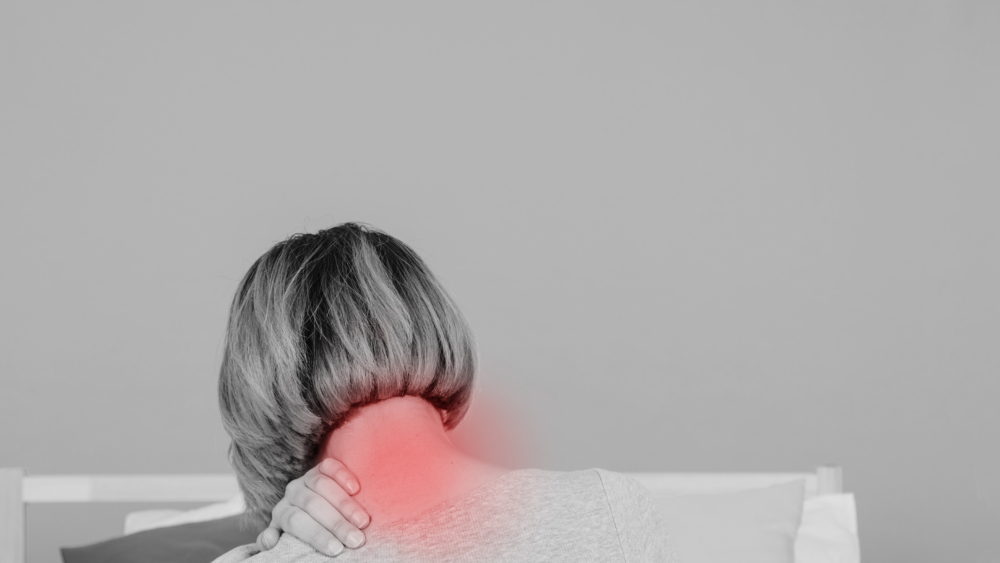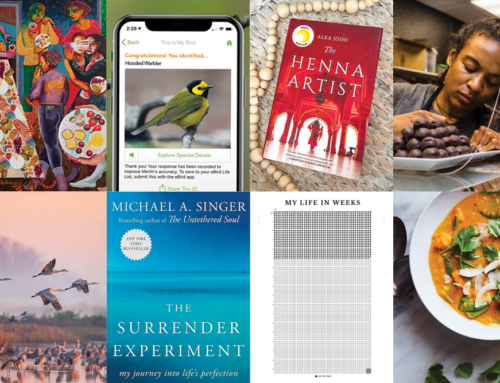For so many of our clients, neck pain (also called cervicalgia, named for pain in the cervical vertebrae of the spine) is a frequent companion. It’s no surprise, because the human head is heavy and large, and our bodies only recently evolved to manage carrying around such weight. And it’s only in the last several generations that our industrialized society has more of us sitting in chairs at tables, using screens and books, and using much less diversity of movement than was required for labor, chores, and recreation than in the past.
What follows are some suggestions for prevention, management and self-care for neck pain. Of course, please consult with your primary care provider if you’re experiencing neck pain for the first time or have any symptoms without clear origin. Also, if you have a chronic condition like disc degeneration, nerve impingement, neuropathy, or any other illness, make sure to consult with your medical team before following this advice.
Prevention is Crucial
The first step to addressing neck pain is to understand your “triggers” and to start examining what your body might be telling you before a re-occurrence of neck tightness. For some people, too much physical activity might preclude a neck spasm the next day. For others, not moving enough could lead to a stiff neck. Other triggers might include changes in temperature or barometric pressure, high stimulation, emotional stress and anxiety, challenging and repetitive motions like driving or using machinery, menstruation, or other physical pain. One friend of mine says that if an old ankle injury bothers her, she knows to look out for and try to prevent a neck spasm in the next few days! Acknowledge the reality of the situation, and give yourself space. This might include clearing your schedule as much as possible, avoiding activities that challenge your neck like driving and using a laptop, using your Western medical interventions (i.e. medications and treatment options prescribed by your doctor), following the tips below and OF COURSE, scheduling an acupuncture session.
In order to fully address the underlying patterns that cause neck pain, we recommend 4-6 weekly sessions of acupuncture, and then reassessing your situation to decrease treatment frequency. It’s important to note that if you start to treat your neck weeks, months or years after the onset of pain, your treatment plan may be longer. The duration of pain plays a role – pain that has been going on for months will take weeks to treat, while pain that has been going on for years will take months.
Stop Stagnation
The base of the skull, neck, and shoulder area is a web of interconnected muscles, fascia channels, and structures like bone and cartilage. As one area gets called on too much in periods of repetitive activity and stress, the other areas don’t get the necessary movement, lymph and blood flow to maintain effortless function. The acupuncture channels that go through the neck (including the Gallbladder, Bladder, and Small Intestine) are particularly prone to stagnation. As you care for yourself when you have neck pain, try things that will encourage flow and move blockages.
Generally, we recommend trying gentle heat (which may be in contrast to the ice often recommended at physical therapy), slow and attentive movement like qi gong, gentle yoga, and self-massage. Another suggestion is to provide a firm resting place for your head when you lie down, to let the muscles of the neck relax and improve connection to the rest of the spine. Try lying on your back with a folded bath towel or thin quilt under your head and see if that helps.
Use your Senses
The anatomy of the neck is highly connected with the physiology of the face and skull. So much of our ability to use our senses is based on being able to move the head into a position to gain sensory input. If you’re noticing that your neck is tense, check in with your “sensory portals,” as we like to call them in TCM, and give them some TLC.
Our EYES (ocular muscles) are linked to the neck musculature. If you have been relying on your eyes heavily (looking at you, everyone with a cell phone), do some gentle palming and look off into the distance to allow your ciliary muscles to relax.
Our EARS are nestled under temporalis muscles and the temporal lobe of the skull which can store a huge amount of tension. Try massaging all around and above your ears with a firm touch, moving towards the top and back of the skull. This is a great place to use tiger balm or an essential oil blended into a neutral oil (test it on a small area first to make sure it doesn’t irritate your eyes).
Similarly, the muscles of the MOUTH and jaw can heavily contribute to neck pain. Try an intraoral massage as part of your self -care routine.
The sinus cavities around the NOSE can become quite congested, and this can cause lymph backup down the neck and the rest of the body. Take a moment to engage in a Large Intestine channel massage or just take some deep, slow breaths.
The SKIN (as the organ of touch) can also help you manage your neck ache. Stop in the clinic and purchase gua sha and facial roller tools that can feel amazing on a sore neck or face, while also promoting collagen production for long-term elasticity.
Look Down the Chain
As the song goes, the neck bone is connected to the back bone. Because the neck serves as a bridge between the heavy skull and the complex and dynamic structure of the rest of the body, the solution to working with neck pain rarely lies in the neck itself. During an acupuncture treatment, your practitioner will often use points in your legs, arms, feet and ears to address neck pain. Here are some suggestions for loosening up the back of the body that can relieve a tight neck. They’re also great resources to incorporate into your prevention routine.
- Shoulders and arms
- Psoas release
- Hips (legs up the wall or legs on a chair)
- Legs (stretching the hamstrings and calves while lying and standing)
- Feet (addressing gait issues, plantar fasciitis, and tension in the toes)
The neck is an amazing part of human anatomy that plays a huge role in so many of the daily activities that we take for granted. It often doesn’t get the care and attention that it deserves. However, as with many things, less is often more in terms of prevention and treatment. Don’t be overwhelmed by this list of suggestions. Pick one or two that seem relevant and helpful for you and your neck, try them consistently, and discuss your findings with your acupuncturist. Hopefully, your neck pain can be a teacher and guide into the importance of self-care and attending to your own needs.





